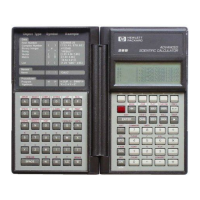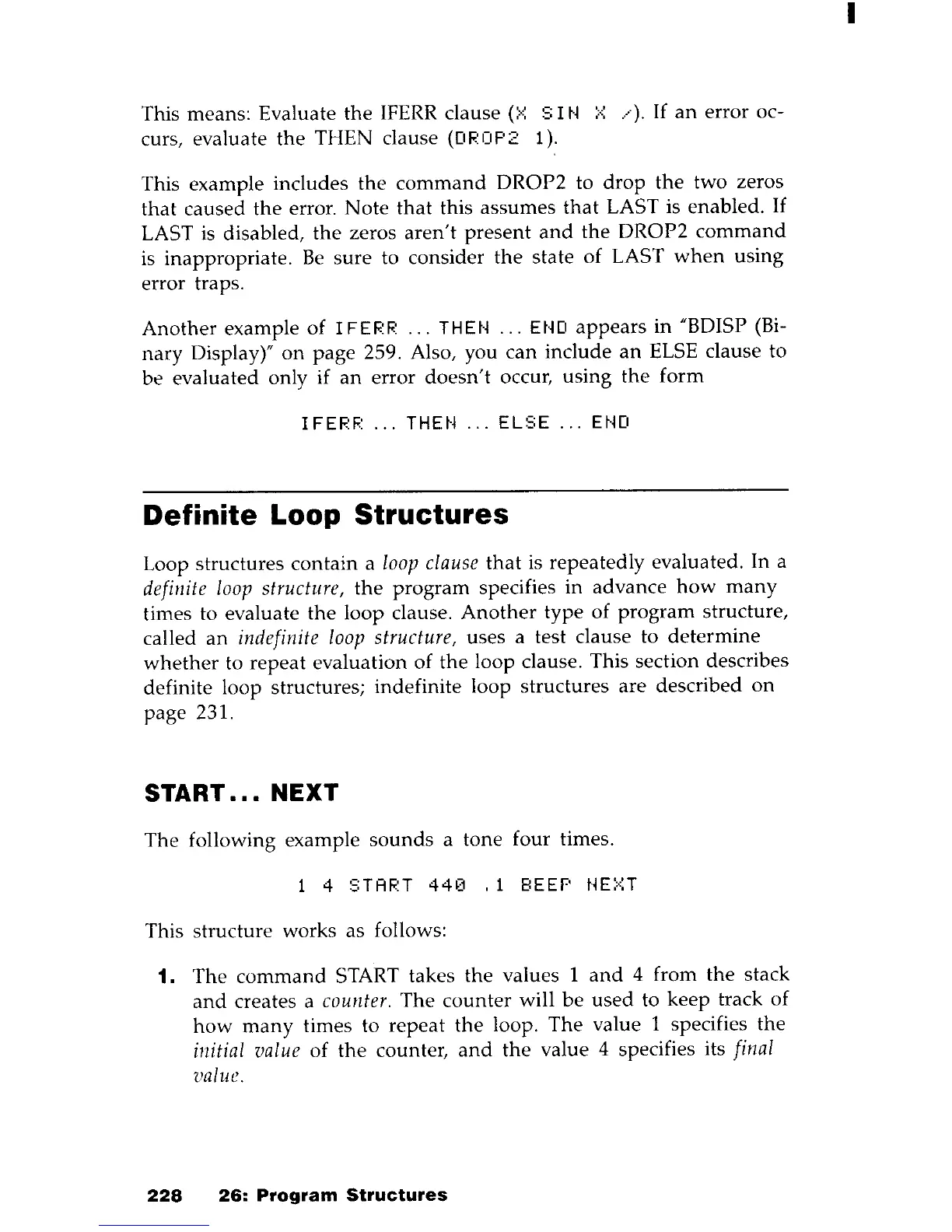This means: Evaluate
the
IFERR clause
(:":
~;
Hl
::<
/).
If
an
error oc-
curs, evaluate
the
THEN clause (DF.:OP2 1).
This example includes
the
command
DROP2 to
drop
the
two zeros
that
caused
the
error. Note
that
this assumes
that
LAST is enabled.
If
LAST
is
disabled,
the
zeros
aren't
present
and
the
DROP2
command
is inappropriate.
Be
sure to consider
the
state
of
LAST
when
using
error traps.
Another
example
of
I
FEF.:F.:
...
THEt'l
...
Et~D
appears
in "BDISP
(Bi-
nary Display)"
on
page 259. Also, you can include
an
ELSE clause to
be
evaluated only if
an
error
doesn't
occur, using
the
form
I
FEF.:F.:
...
THE~l
'"
EL~;E
...
Et·W
Definite
Loop
Structures
Loop structures contain a
loop
clause
that
is repeatedly evaluated. In a
definite
loop
structure,
the
program specifies in advance
how
many
times to evaluate
the
loop clause.
Another
type of
program
structure,
called
an
indefinite
loop
structure, uses a test clause to
determine
whether
to repeat evaluation of
the
loop clause. This section describes
definite loop structures; indefinite loop structures are described
on
page 231.
START
...
NEXT
The following example
sounds
a tone four times.
1 4 STAF.:T
440
,1
BEEP
NEXT
This structure works as follows:
1. The
command
START takes
the
values 1
and
4 from
the
stack
and
creates a counter. The
counter
will
be
used
to keep track
of
how
many
times to repeat
the
loop. The value 1 specifies
the
initial value of
the
counter,
and
the
value 4 specifies its
final
value.
228
26:
Program
Structures
I

